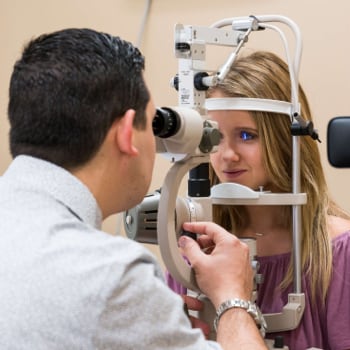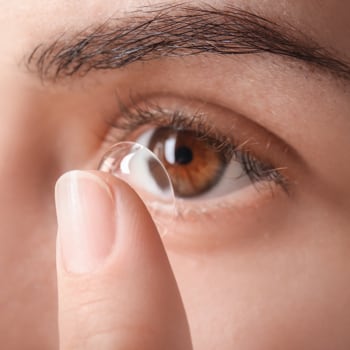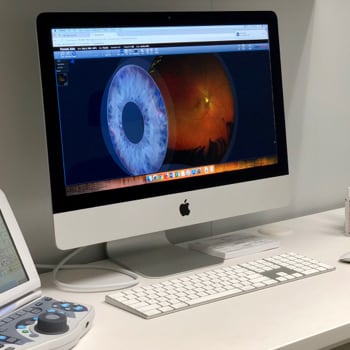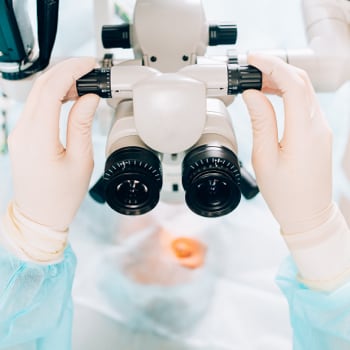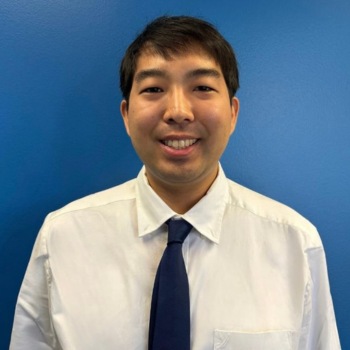Myopia often begins in childhood, but it can continue to get worse well into adulthood, especially without proper habits and care.
Nearsightedness involves more than blurry distance vision. It reflects physical changes in the eye that can impact long-term vision health. Genetics, prolonged screen use, lack of time outdoors, and even lighting conditions can all influence how quickly myopia progresses.
Regular eye exams, healthy visual habits, and early intervention can make a real difference in protecting your or your child’s sight.
Understanding Myopia Progression
Myopia progression refers to the gradual worsening of nearsightedness over time. This isn’t just about needing stronger glasses; it’s a structural change in your eye that can have long-term implications for your vision health. The progression typically occurs when the eyeball continues to elongate, causing the retina to move further away from where light naturally focuses.
How Fast Does Myopia Progress?
The rate of myopia progression varies significantly from person to person. Children and teenagers often experience the fastest progression, with some studies showing an average increase of 0.5–1.0 diopters per year. Adults typically see slower progression, though it can continue well into their 20s and beyond.
The Role of Genetics in Myopia Progression
Family history plays a role in myopia progression. If one or both of your parents are nearsighted, you’re at a much higher risk of developing and experiencing worsening myopia.
Research shows that children with 2 myopic parents have a higher chance of developing myopia, compared to those with only 1 myopic parent. The genetic influence doesn’t just affect whether you’ll develop myopia, but it also impacts how quickly it progresses.
The Power of Natural Light & Outdoor Time
Spending time outdoors has emerged as one of the most effective ways to slow the progression of myopia, especially in children. This isn’t just about getting fresh air, but there’s something specifically beneficial about natural light exposure.
Why Outdoor Time Matters
Spending time outdoors has been shown to reduce the risk of developing myopia, particularly in children. While the exact mechanisms are still being studied, several factors likely contribute to this protective effect:
- Bright light exposure: Outdoor light is significantly more intense than indoor lighting. Exposure to high light levels may stimulate the release of dopamine in the retina, which is thought to help regulate eye growth and reduce axial elongation—a key driver of myopia.
- Reduced near work: Outdoor activities naturally involve focusing on distant objects, which provides relief from continuous near work and may reduce accommodative strain on the eyes.
Research continues to confirm that increased time outdoors is one of the most effective lifestyle factors for lowering the risk of myopia onset in children.
Age-Related Changes in Vision
Myopia progression follows predictable patterns throughout life, and understanding these can help you know what to expect and when to be most vigilant about eye care.
Childhood & Adolescence
The fastest myopia progression occurs during the school years, typically between the ages of 6 and 18. This coincides with rapid eye growth during development. Several factors make this age group particularly vulnerable:
- Rapid physical growth affects eye structure
- Increased academic demands requiring more near work
- Less time spent outdoors due to school and activities
- Early exposure to digital devices
Young Adulthood
Myopia progression usually slows down in the early 20s when eye growth stabilizes. However, college students and young professionals often experience continued progression due to:
- Increased computer use for work or study
- Reduced outdoor activities
- Lifestyle changes affecting sleep and nutrition
Adult Years
While myopia progression typically slows in adulthood, it doesn’t always stop completely. Adult-onset myopia or continued progression can occur due to:
- Prolonged computer work
- Certain medical conditions
- Medications that affect vision
- Hormonal changes
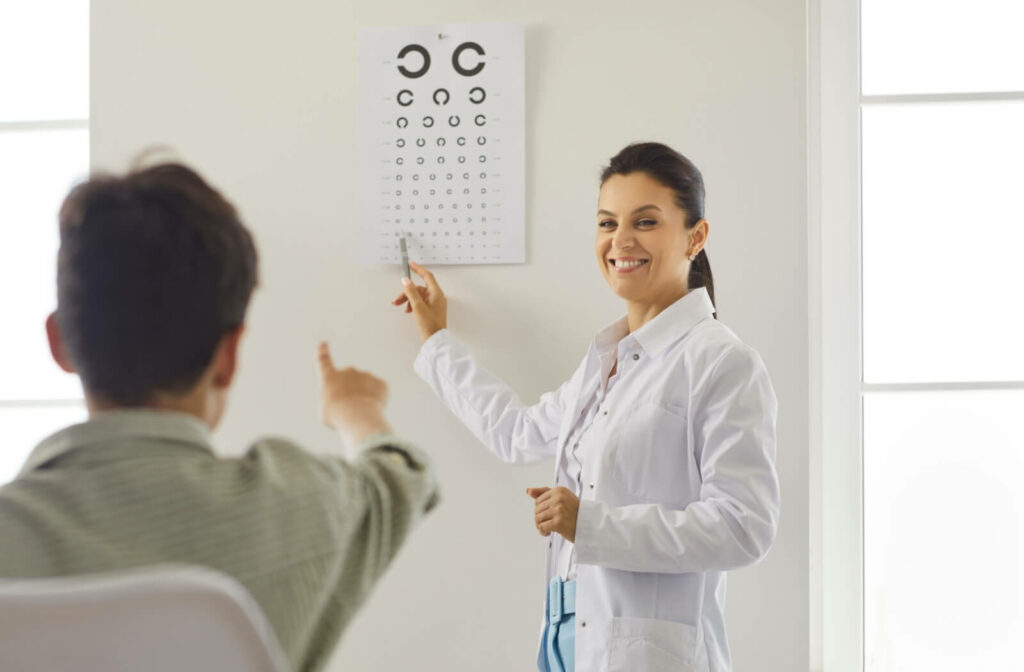
Identifying Warning Signs of Myopia Progression
Recognizing the early signs of worsening myopia can help you seek timely treatment and prevent further progression. Common symptoms include:
- Vision changes: Distant objects may appear blurrier than before, even with current prescription glasses or contacts.
- Eye strain symptoms: Frequent headaches, especially after reading or computer work, tired eyes, and difficulty focusing.
- Behavioral changes: Squinting to see distant objects, sitting closer to screens or books, and complaining about difficulty seeing the board at school or work.
- Night vision issues: Increased difficulty seeing in low-light conditions or while driving at night.
If you notice any of these symptoms, it’s important to schedule an eye exam promptly. Early intervention can make a significant difference in managing myopia progression.
Myopia Control Options
Modern eye care offers several approaches to slowing the progression of myopia. These treatments go beyond simply correcting vision. They’re designed to address the underlying causes of eye elongation.
MiSight 1 Day Contact Lenses
MiSight lenses are daily disposable soft contact lenses specifically designed for myopia control in children. These lenses have been shown to slow myopia progression by an average of 59% over 3 years. They work by creating controlled zones of defocus that help signal the eye to slow its growth while still providing clear vision.
Orthokeratology
Ortho-k involves wearing custom-designed rigid lenses overnight to gently reshape the cornea while you sleep. This allows for clear vision during the day without the need for corrective lenses (such as glasses or contacts). Ortho-k is also effective in slowing down the progression of myopia in children and teens.
Low-Dose Atropine Drops
Atropine eye drops, used in low concentrations, have shown strong results in reducing the rate of myopia progression. These drops are typically applied nightly and are well-tolerated by most children. Atropine works by relaxing the eye’s focusing mechanism, which may help regulate eye growth.
Taking the Next Step in Managing Myopia
Myopia can worsen over time, but with early intervention and the right care, you can slow its progression and protect long-term vision.
At Great Hills Eye Care, we offer personalized treatment plans tailored to your or your child’s needs. Book an appointment today to explore your options and take control of your eye health.




